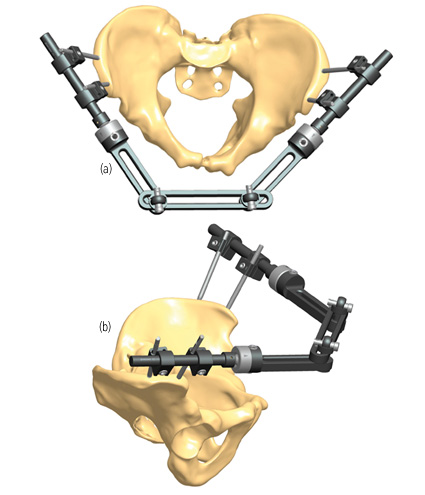Pelvic Fixator
THIS INFORMATION IS FOR HEALTHCARE PROFESSIONALS ONLY
THIS INFORMATION IS FOR HEALTHCARE PROFESSIONALS ONLY
Iliac crest application of the Pelvic Fixator Long Body with Ball-jointed Modules for Independent Screw Placement. Laparotomy possible with fixator in place.
(a) Viewed from above.
(b) Lateral view.
Use of HA-coated screws is recommended.


Fracture dislocation of the pelvis. Iliac crest application of the Galaxy Fixator. Laparotomy possib...
Read MoreFracture dislocation of the pelvis. Hybrid application (one screw anterior and one in the iliac cres...
Read MoreFracture dislocation of the pelvis; anterior stabilization. Anterior application of the Pelvic Fixat...
Read MoreFracture dislocation of the pelvis. Anterior application with Galaxy Fixation™ system. Use of HA-c...
Read MoreFracture dislocation of the pelvis. Iliac crest application of the Galaxy Fixation Gemini™....
Read MoreFracture dislocation of the pelvis. Hybrid application (one screw anterior and one in the iliac cres...
Read MoreFracture dislocation of the pelvis. Anterior application of the Galaxy Fixation Gemini™....
Read MoreFoot and Ankle Charcot Reconstruction with External Fixation
Surgical reconstruction of foot and ankle Charcot with external fixation is especially useful in the presence of poor bone quality,Read MoreExpert Tips on How to Medically Diagnose Charcot Arthropathy
The diagnosis of Charcot neuroarthropathy of the foot and ankle can be challenging due to a lack of information inRead MoreThis website is reserved only for Healthcare Professionals and their staff. Therefore, the access to these information is denied to non professional audience.
